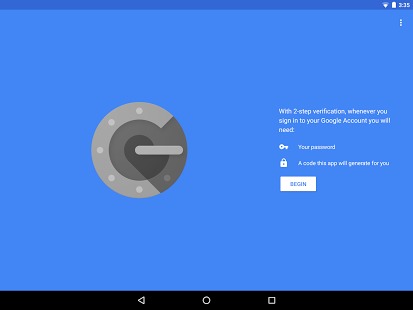If you use online banking, you’re probably already using two-factor authentication without even realizing it. If not, expect to be doing so in the coming year, as this security protocol is big news in the digital world right now. Two-factor authentication or dual-factor authentication is a type of multi-factor authentication that grants access after users provide two evidence pieces. It adds an extra layer of validation, minimizing security breaches and exposure.
In this article, we’ll take a look at how 2FA can combine with other security services (such as some of the best VPN services) to offer enhanced protection online.
What are Authentication Factors?
There are multiple ways to authenticate using more than one method. Most authentication methods rely on knowledge factors like passwords, while two-factor authentication adds a possession factor or an inherence factor. A vast majority of two-factor authentication methods rely on the first three points from the list.
– Knowledge factors are those which a person can remember, such as a password or a PIN.
– Possession factors are those a user has, like an ID card or a smartphone, or any other device.
– Inherence or Biometric factors are factors from the user’s physical self. They may be a fingerprint, facial, or voice recognition.
– Location factors use the location from where an authentication attempt is being made. Here IP address and GPS data are being used.
– Time factors restrict a user’s authentication to a specific time window in which logging is permitted while restricting access to the system outside that window.
What is Two-Factor Authentication?

Two-factor authentication, abbreviated commonly to 2FA, is the latest security measure to keep internet users safe. By using the protocol, you authenticate your identity by supplying a password – the familiar stage for most of us – as well as a unique code that is delivered via your phone or a standalone app. In particular cases, it also takes biometric factors like a fingerprint or facial scan as a second factor.
If you have a widget of any kind that you need to log into your internet bank, or if you are ever sent a code to your registered mobile phone to enter onto a log-in page after submitting your password, these are both examples of two-factor authentication. So the chances are you may already be using it without even realizing it!
What is Two-Factor Authentication For?
2FA makes sure that anyone accessing a private account has both the necessary password and the accompanying physical device. By doing so, it makes it far harder for a hacker to crack your accounts.
Cybercriminals can use sophisticated tools and codes to spy on passwords and extract them from unsecured digital devices and connections. For example (see our blog for the dangers of using Public WiFi for a good example of the risks here!). However, unless they also have the user’s phone or external authentication device, they won’t access the account.
What are the Types of Two-Factor Authentication?
Two-factor authentication is widely adopted in many different services and devices, ranging from tokens, RFID cards to simply apps. 2FA products are widely divided into two categories: tokens, which are given to users when they log in, and infrastructure or software that help recognize and authenticate access for users who are using their tokens correctly.
Authentication tokens come in various forms such as key fobs or smartcards or exist in software in mobile that generates PIN codes for authentication. These passwords are commonly known as one-time passwords generated by the server and recognized as authentic by the device or app.
What are the Benefits of 2FA?
Essentially, the benefits are extra security. Social engineering hacks and password hacks are far easier to carry out. This is why banks are now implementing two-factor authentication as part of their operations and minimizing the problems they have been experiencing with fraud on a huge scale.
2FA also gets around the problem of passwords, which are easily broken, tend to be weak, and generally outdated. Most people use passwords that cybercriminals can take educated guesses at. Really complex passwords -such as combinations of letters, numbers, and symbols are too hard for most people to remember.
Services such as LastPass can help to manage your passwords and to generate extra-long password strings, but they still mean that users have just one password to protect them and their account.
With the two-factor authentication approach, the two different keys bring the security level up a notch.
What is the Difference between 2FA and Two-Step Verification?
Two-Factor authentication uses two separate authentication types. This is typically a text field based on what the user knows – private information such as a password.
It is combined with something physical, such as a fingerprint or a code from a registered and a trusted secondary device, such as a mobile phone or a device provided by the website owner. (For banks, these look like tiny calculators.)
With Two-Step verification, the same type of information can be entered by different sources. As an example, this could be a code typed into the website as your password, and then the submission of a code sent via SMS as a token.
How Safe is 2FA?
The protocol certainly adds to the level of safety that safeguards online accounts, so much so that all financial institutions are now adopting the standard. It’s certainly a far better means of securing an account than the previous approach of ‘security questions’.
Two-Factor Authentication brings improvement in security as the right to access no longer relies solely on the passwords’ strength. Firstly, it removes the irritation that occurs when you can’t remember the random information you provided at setup. Secondly, it takes away the risk of cybercriminals being able to guess your ‘security answers’ by researching your data online.
However, that doesn’t mean it is immune from accidents. One of the most high-profile breaches of a compromised two-factor system occurred with RSA Security in 2011, where its SecurID authentication tokens were hacked.
Who Can Benefit from Using Two-Factor Authentication?
All customers who want to keep their data secure and all businesses who want to offer that level of security to their customers can benefit from 2FA. Already a large number of banks and web services are on board with the protocol.
Are There Any Problems with 2FA?
The main concern is that you will lose the primary authentication device that allows your second phase of identification – whether that’s your smartphone or your ‘widget’. However, most services have special passcodes or recovery processes that can unlock your account if anything goes wrong.
What are other security measures that can be put in place alongside 2FA?
It’s always advisable to use a Virtual Private Network (VPN) when you are online. It downloads a piece of software to your devices, which keeps all of your data secure in a private tunnel, with added encryption to keep it undetectable and unreadable in transit.
With a VPN, it’s as though you were never online in the first place. Cybercriminals, hackers, malware, bugs, and any type of malicious code are unable to even see you online, let alone access and compromise your data. There are plenty of VPN services on the market with free and paid-for options, and they are easy to set up and use.
Final Verdict
In conclusion, two-factor authentication is a welcome addition to the online security arsenal and one that you can expect to see more of in the coming year. Passwords are not the best examples of security as we humans tend to have lousy memories and handle too many accounts. Combine it with stronger passwords (using a random password generator if necessary) and a VPN, and your online experiences will remain safe, secure, and as enjoyable as ever.

